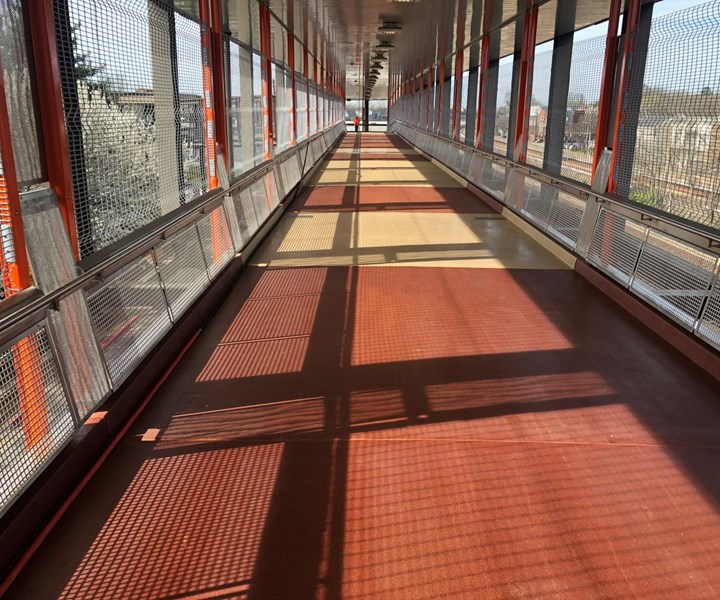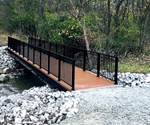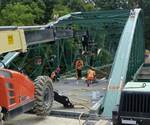Composite Advantage rehabilitates Atlanta pedestrian bridges
Fiber-reinforced polymer (FPR) is applied to pedestrian bridge infrastructure in Atlanta. The corrosion-resistant composite minimizes maintenance and provides a more durable surface.

Inman Park MARTA station sports new FiberSPAN composite decking. Source | Composite Advantage
Composite Advantage (Dayton, Ohio, U.S.) reported on April 29 that it has rehabilitated two pedestrian overpasses servicing the Inman Park/Reynoldstown Station using its FiberSPAN fiber-reinforced polymer (FRP) bridge decking. Essential for safe travel, the bridges required improvement after the degradation of the original infrastructure.
The FiberSPAN product replaced heavy, decaying concrete. The lightweight, zero maintenance FRP decks allowed contractors to use the original steel trusses, minimizing the repair and labor costs associated with steel upgrades. “Access to the work site was limited,” says Scott Reeve, marketing director for Composite Advantage, now part of the Creative Composites Group. “It was difficult to maneuver the FRP panels into place, but precast concrete would have been prohibitive. Aside from problems with ingress, it would have taken longer to pour concrete and caused additional disruption and downtime for the rail station.”
Composite Advantage prefabricated panels were integrally molded with curbs and crowns for water runoff to drainage scuppers with built-in 14-inch by 19.7-inch trenches. Design requirements included a live load of 90 psf, a wind uplift load of 30 psf and a minimum crushing strength of 150 psi. Both bridge decks meet an ASTM Class II flame-spread classification and can operate in a temperature range of -40°F to 160°F. Both decks also received a non-slip pedestrian-grade polymer aggregate surface.
The North entrance pedestrian bridge deck consists of 11 FRP panels with a total length of 138 feet. The South entrance bridge deck, comprised of 33 panels, has a total length of 394 feet and includes 90-degree turns. Composite Advantage says design flexibility, aesthetics, light weight and longevity made FRP a robust choice for the Inman Park MARTA station, which recently re-opened to commuters and visitors.
Related Content
-
Revisiting the OceanGate Titan disaster
A year has passed since the tragic loss of the Titan submersible that claimed the lives of five people. What lessons have been learned from the disaster?
-
Co-molding SMC with braided glass fiber demonstrates truck bed potential
Prepreg co-molding compound by IDI Composites International and A&P Technology enables new geometries and levels of strength and resiliency for automotive, mobility.
-
Plant tour: Airbus, Illescas, Spain
Airbus’ Illescas facility, featuring highly automated composites processes for the A350 lower wing cover and one-piece Section 19 fuselage barrels, works toward production ramp-ups and next-generation aircraft.


